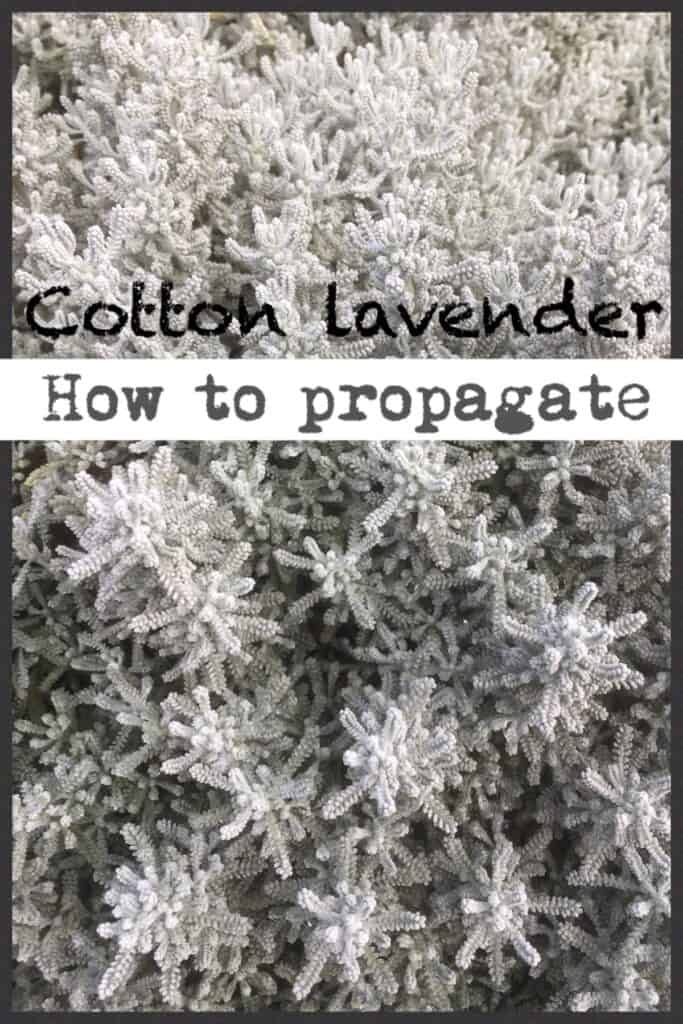
Propagating Santolina chamaecyparissus- Cotton Lavender
Cotton Lavender is a small evergreen shrub grown for its attractive silver/grey foliage. This article shows how to propagate cotton lavender using cuttings.
The best time to take cuttings of santolina is during the warmer months. Whilst we have propagated them during winter the success rate is greatly reduced.
We find the cuttings can rot quite easily so by taking them when the weather is warm you can water more frequently without so much risk of overwatering.
Harvest cuttings
Use the fresh growth for the cuttings. You’ll notice that the parts of the stem that receive no sunlight are brown and dead looking, don’t use this part of the stem. However don’t worry about this bald looking patch once the sun hits this area new foliage will begin growing.
We almost always take small sized cuttings 6-7cm (2.5″) in length. This will greatly improve the success rate of the cuttings as there is less stress on the plant. It’s very difficult for the cutting to maintain a lot of foliage without any roots.
Once the stems are cut into the right sized lengths you simply strip away 2/3 of the foliage with your fingers. Just run them down the stem from top to bottom.
We often only use the tips of the stem to create cotton lavender cuttings however you can use any part of the stem provided the foliage is new and healthy.
Below are some pictures of how the cuttings should look.
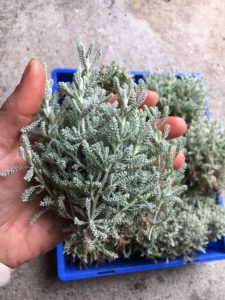
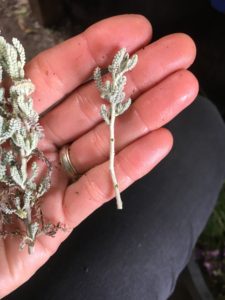
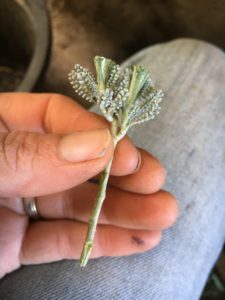
Striking the cuttings
To strike the cuttings we use our perlite, peat moss mix. This is a mix of 90% perlite and 10% peat moss. Both are excellent at holding in moisture whilst also allowing plenty of good air flow. The cuttings need to be “plugged” into the mix.
We mix the perlite and peat moss and place it into a shallow seedling tray, If you are only doing a small amount a clean old pot will be fine. Perhaps just sterilise it before use.
Before plugging the cuttings into the perlite peat moss mix give it a water, this will allow you to create a small hole with a stick or skewer without it caving in. Simply gently push the cutting into the hole.
Once all your cuttings are in water them well. Now the cuttings need to be stored in a sheltered area away from direct sunlight, wind and any weather extremes. We place our cuttings into our greenhouse however a well lit windowsill or protected patio can work just as well.
As mentioned cotton lavender cuttings can be prone to rot, this almost always occurs due to overwatering. With that said it is still important that the cuttings be kept moist. This is why its best to take the cuttings during warmer months as you’re able to water frequently without so much risk of overwatering.
Use your discretion if the perlite and peat moss is moist to touch don’t water. If its dry give a quick water.
The cuttings will strike roots within 2-3 months. Provided we took the cuttings during warmer months we usually achieve above 90% strike rate.
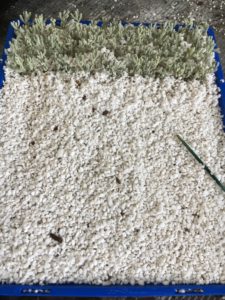
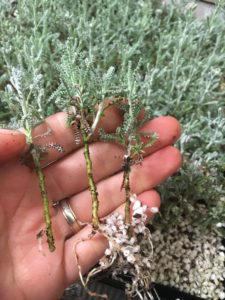
Potting the cuttings
After the roots have developed the cuttings can be potted into soil. Use a good quality potting mix, with plenty of organic material and trace elements.
We prefer to pot our struck cuttings into a small 50mm(2″) seedling tube. This allows these small new plants to take up less valuable real estate in the green house.
It’s important to keep the freshly potted cuttings sheltered from the elements for a little while longer while they develop a stronger root system and some new foliage.
Usually 8 weeks is sufficient to develop the roots enough to be able to plant outside into the garden or into larger pots. Don’t rush it just wait until the roots fill the pot.
Remember to water the freshly potted cuttings really well. On this first water we use a seasol solution, we find this really speeds up the root growth.
Quite often the foliage will become quite leggy due to the lack of direct sunlight during this sheltered stage. Don’t fret cotton lavender loves being pruned. The more often it’s cut the bushier and compact it will become.
We do hope you’ve found this article helpful. If so we’d love it if you would subscribe. Thanks for reading, Happy Planting 🙂
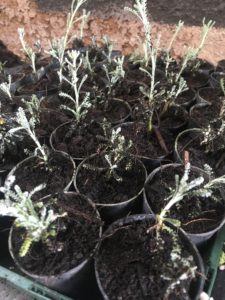
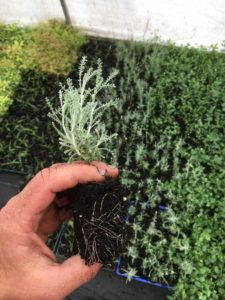
Click here to see other plants we propagate
Propagation Kit
We have also put together a resource page that contains links to the products we use or similar. If you want to check that out click the link.
Propagate Cotton Lavender Video
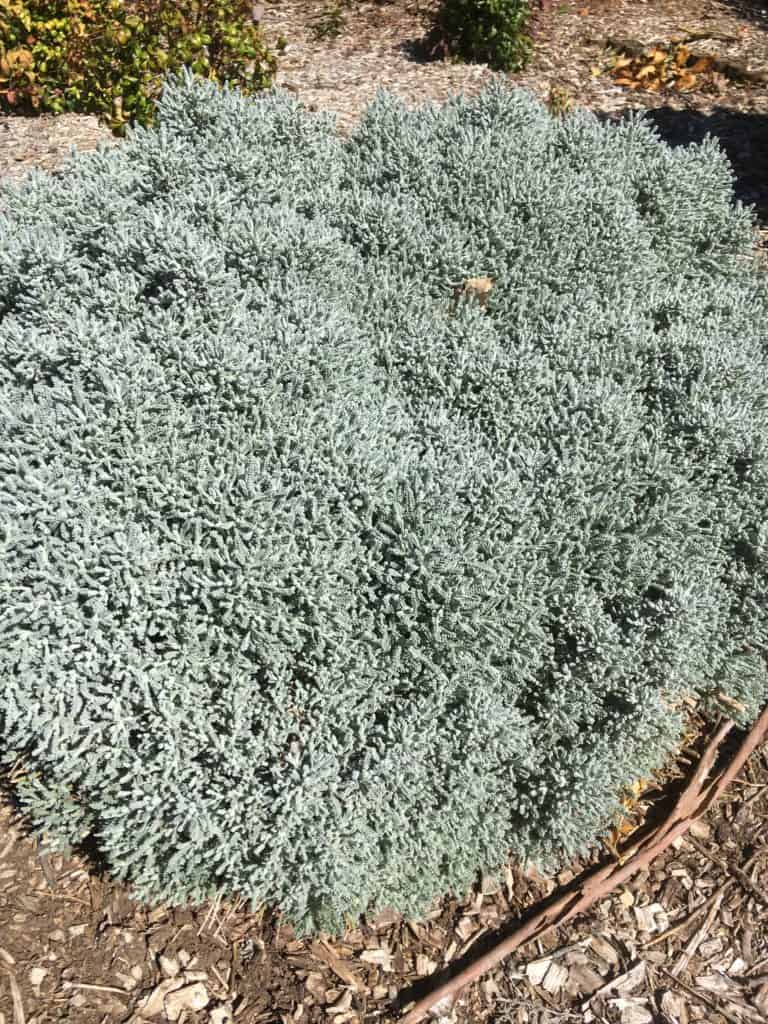
Santolina chamaecyparissus- Cotton lavender
Santolina chamaecyparissus- cotton lavender is a small and compact evergreen shrub. It has narrow silvery-grey leaves which are very aromatic. It shoots out clusters of yellow flowers in summer.
Cotton lavender is a great plant for herb gardens where it can act as an insect repellent. Apparently the dried leaves can be used in moth repelling sachets. Also great in containers or as a border.
Best grown in a position in full sun. Prefers well drained soil. Tolerant of periods of dryness.
Cultural notes
Botanical name: Santolina chamaecyparissus
Common name: cotton lavender
Family: Asteraceae
Native to: western and central mediterranean
Flowers: summer
Position: Full sun
Height: 50cm
Width: 75cm
